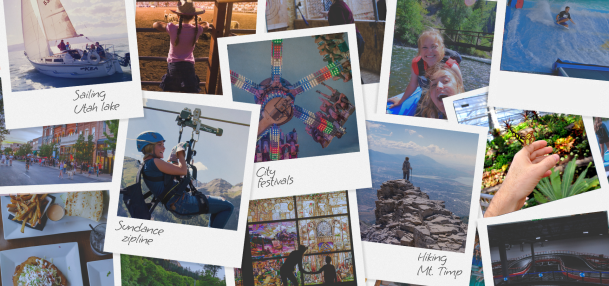“Powder to the people!” If you're stepping onto the snowy expanse of a ski resort and find yourself surrounded by phrases you didn't recognize, you're not alone.
Skiing and snowboarding are rich cultures brimming with their own jargon. To truly "take you up the slopes," embracing this language is key. Let's embark on a journey through the lingo!
1. Types of Ski Lifts
What takes you up the slopes
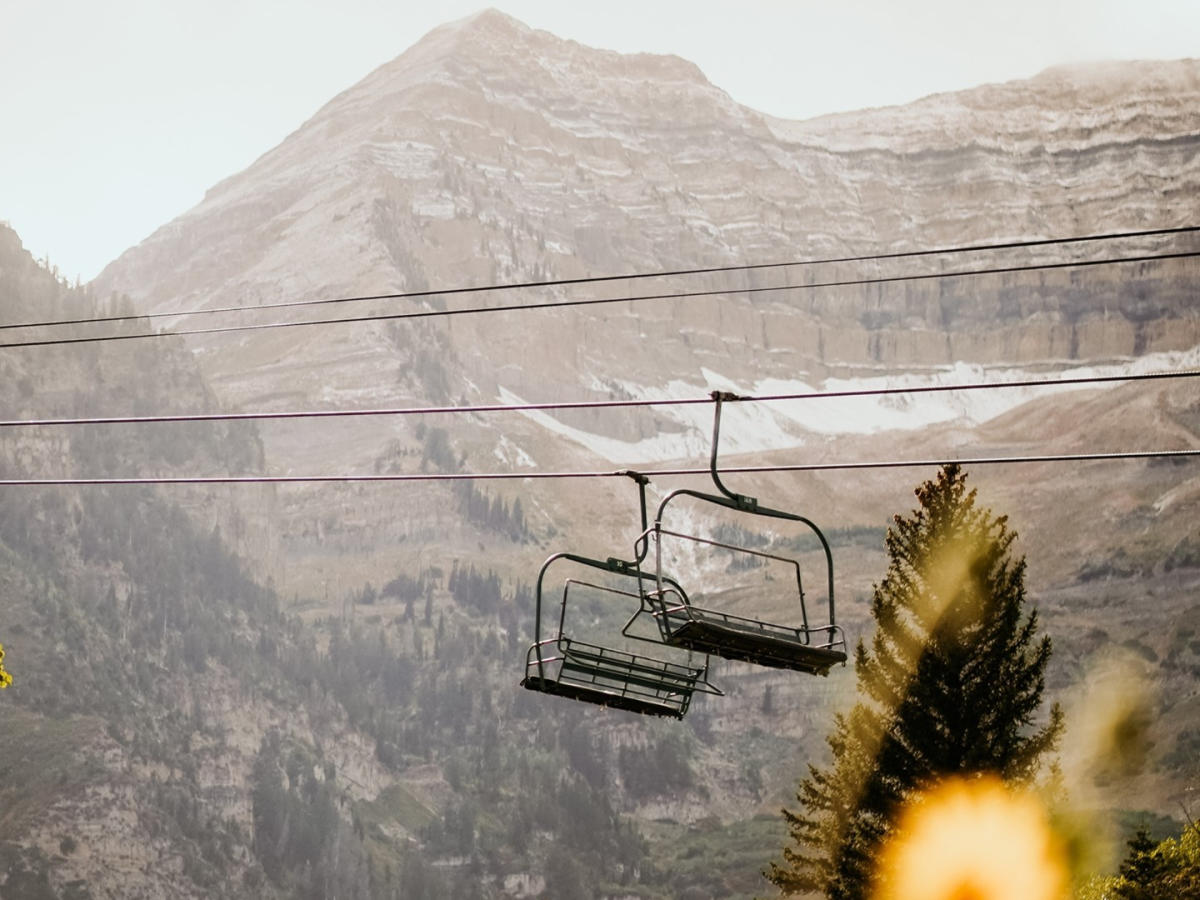
What literally "takes you up the slopes"? Ski lifts! They are the vehicles to mountain adventure, carrying eager souls to the start of their snowy escapades. Before delving into the world of skiing and snowboarding, understanding how to reach those breathtaking peaks is essential. The myriad of ski lifts, each with its unique design, ensures every adventurer is safely transported to their desired height.
- Magic Carpet: Essentially a conveyor belt for skiers and snowboarders, primarily found in beginner areas. It's less intimidating than other lifts, making it perfect for those just starting.
- Chairlift: An aerial lift where riders sit and are transported on a continuously moving cable loop. Common at many ski resorts, chairlifts can carry multiple riders, typically between 2 and 8, depending on its design.
- Gondola: Enclosed cabins that move on an overhead cable. It provides protection from the elements and often carries more people than a traditional chairlift.
- T-bar: A surface lift where skiers place a T-shaped metal bar behind their thighs and are pulled up the hill while remaining on their skis or boards.
2. Types of Ski Slopes
"Bro, Shred the Gnar."
Ski slopes are categorized to help individuals gauge their level and ensure safety. They range from beginner to advanced, each offering unique challenges.
- Bunny Hill: Gentle, flat terrains meant primarily for beginners, ideal for first-timers trying to get the hang of balancing and basic movements.
- Piste: A designated ski run that’s been marked and maintained by the resort. They're groomed regularly to ensure safety and manageability.
- Off-Piste: Areas outside the marked ski runs. These regions are not groomed or maintained and often come with more risks.
- Backcountry: Remote, wild terrains that are not within the boundaries of a ski resort. Specialized equipment and avalanche training are usually recommended.
- Moguls: Mounds or bumps on a ski slope created by the repeated turns of skiers over the snowpack. They present a fun challenge for more advanced skiers.
- Green Circle: The symbol for beginner trails, offering a gentle incline for those just starting.
- Blue Square: Intermediate trails that provide a bit more challenge for the progressing skier.
- Black Diamond: Advanced trails, steeper and more challenging.
- Double Black Diamond: Only for the experts, these trails are the steepest and most challenging on the mountain.
3. Weather
Nature's Role in the Alpine Dance
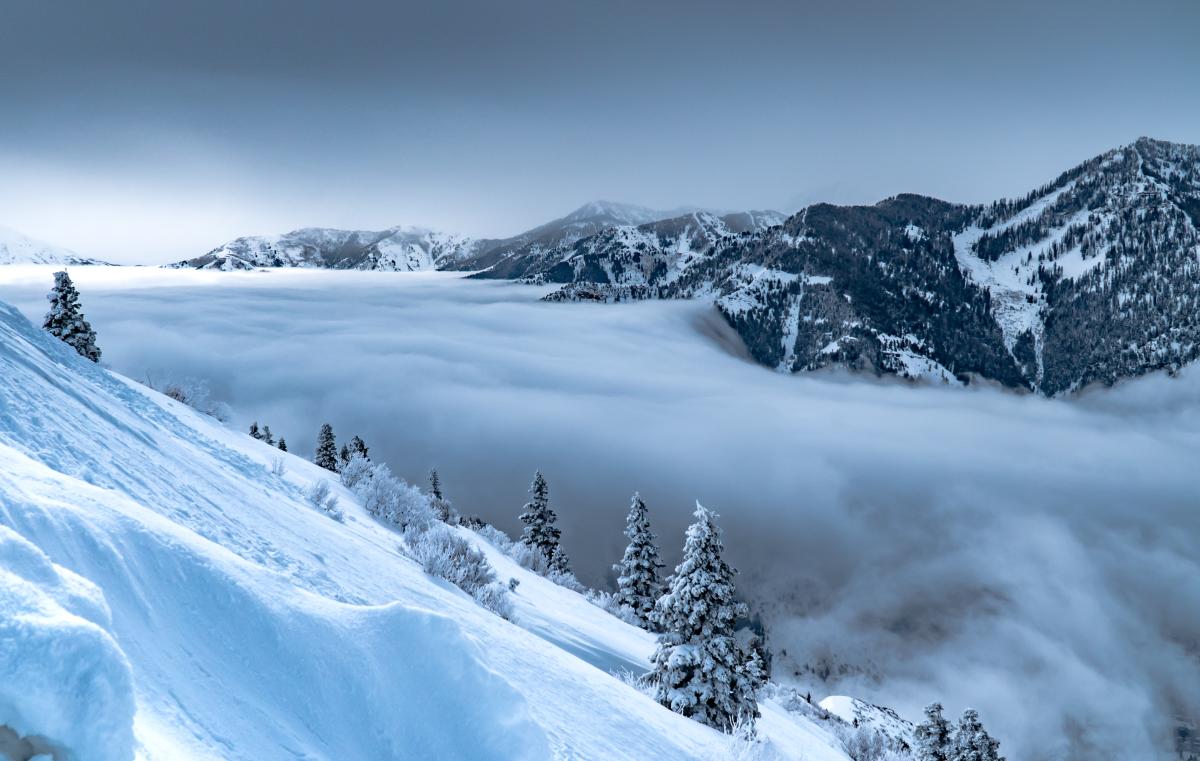
Skiing's unpredictability often lies in its weather conditions, impacting visibility, snow quality, and overall skiing dynamics.
- Bluebird Day: A skier's delight; this refers to a day with clear blue skies, often following a night of snowfall.
- Whiteout: These conditions make visibility incredibly low because of snowfall or fog. It’s essential to ski cautiously during a whiteout.
- Freshies: Freshly fallen snow that hasn't been touched by skiers or snowboarders yet.
- Pow: An abbreviation for powder, this term describes the soft, fluffy snow that skiers and snowboarders adore.
- Corduroy: The pattern left on a ski slope after it's been groomed. The name comes from its resemblance to corduroy fabric.
- Dump: This is when the mountain receives a significant amount of snowfall in a short period, creating excellent conditions for skiing or boarding.
4. Ski Terms
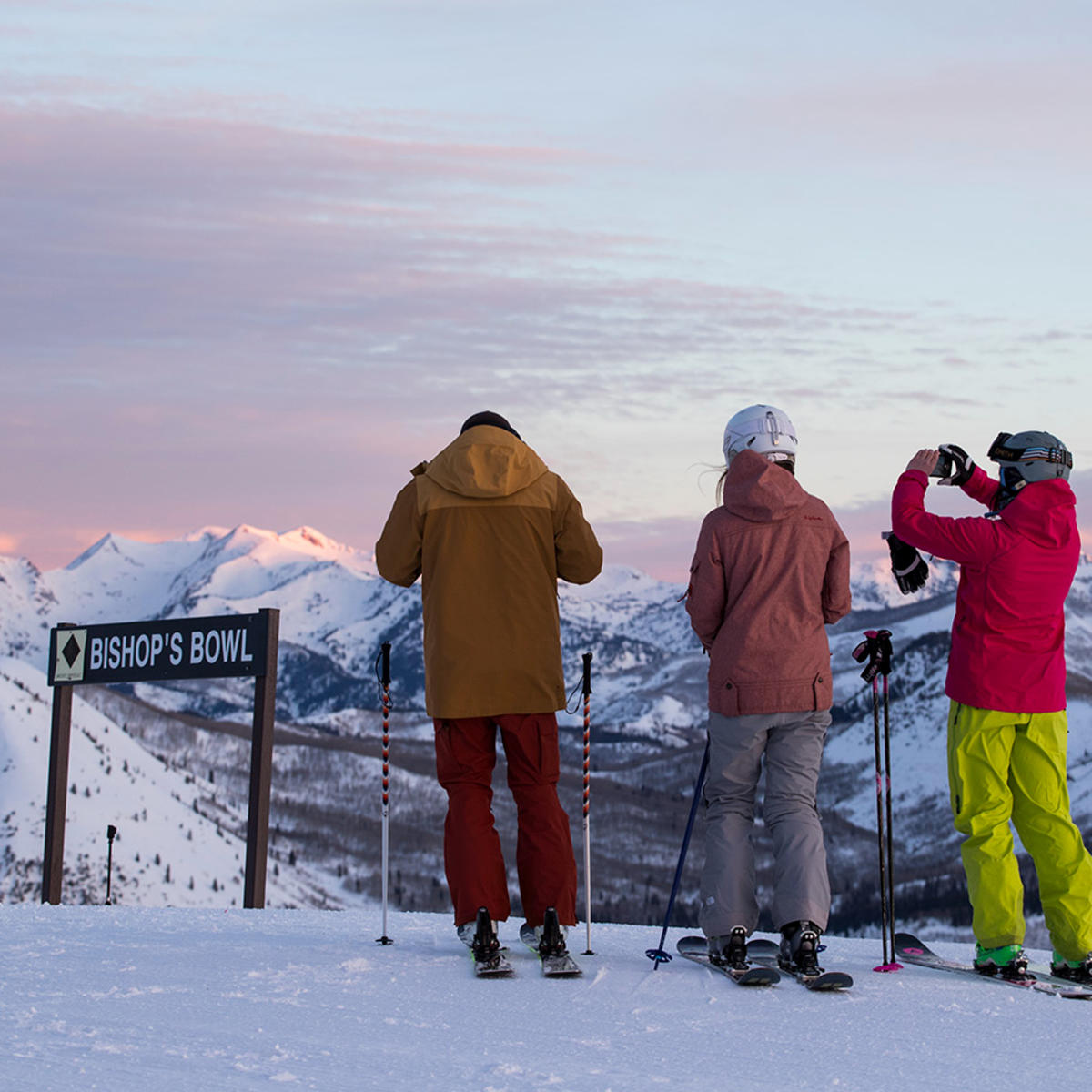
Talk the Talk as You Walk the Snowy Walk
Immersing in ski culture means adopting its colorful and expressive lexicon, connecting deeper with the community.
- Yard Sale: This amusing term describes a skier or snowboarder who has fallen and lost their equipment, resembling a scattered front yard sale.
- Shred the Gnar: This phrase encapsulates the thrill of skiing or snowboarding on challenging terrains, especially in fresh powder conditions.
- Apres-Ski: Literally "after ski" in French, this term describes social activities post-skiing, like enjoying hot cocoa by the fireplace or hitting a mountain bar.
- Pizza & French Fries: In skiing, "pizza" describes the snowplow technique, with skis forming a V-shape to slow down. "French fries" mean skis are parallel, used for going faster.
- Scissoring: When a skier's skis cross each other unintentionally, usually leading to a fall.
- Bomber: Someone who’s fearlessly speeding down the hill, often taking risks.
- Carve: When a skier or snowboarder turns by tilting the ski or board onto its edge. Carving leaves a clean line in the snow.
- Ski Bum: Someone who's wholly devoted to the skiing lifestyle, often prioritizing it over traditional work or responsibilities.
- Gaper/Jerry: A novice on the slopes, usually identifiable by their lack of skill or knowledge about mountain etiquette and sometimes by their ill-fitting gear.
- Liftie: The friendly staff responsible for operating the ski lifts, ensuring safe embarkation and disembarkation.
- Traverse: Skiing across a slope horizontally, often used to access specific areas or maintain speed control.
5. Snowboard Terms
Riding the Waves of Snowy Lingo
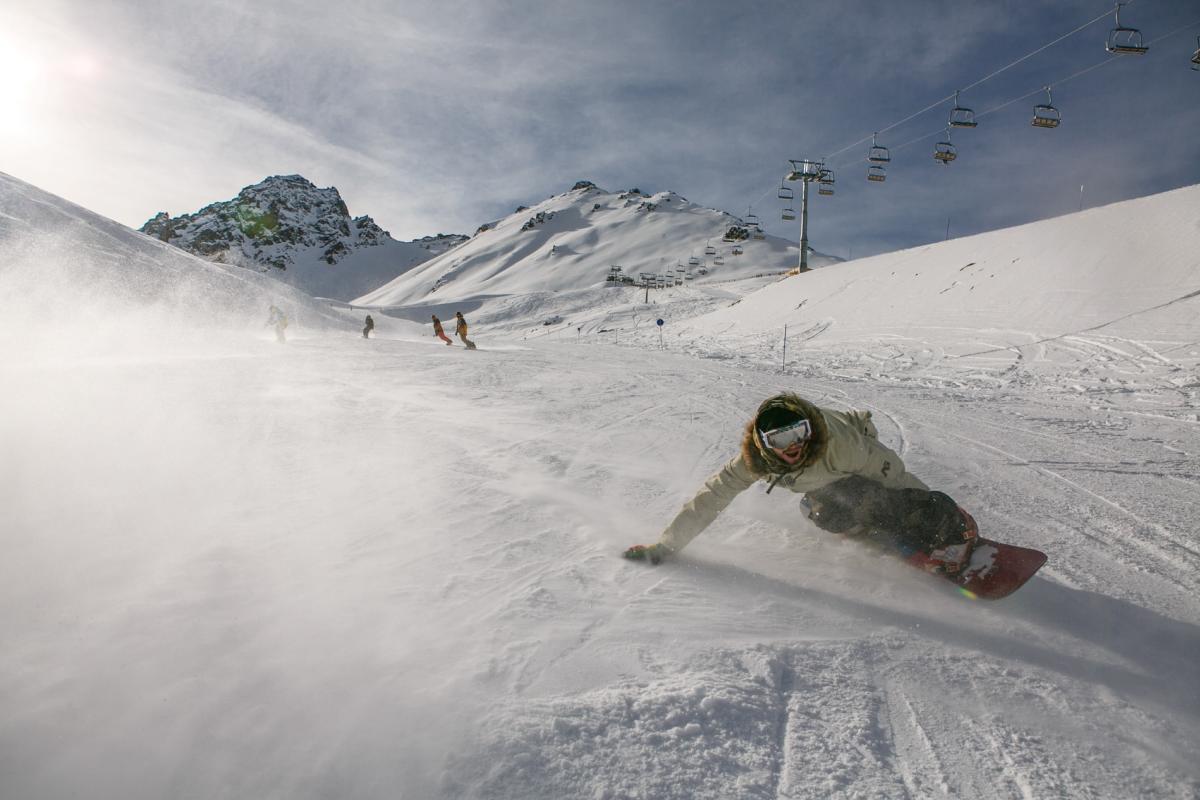
Just like its counterpart, snowboarding has its own set of phrases and terminologies that speak volumes about its culture and community.
- Falling Leaf: A beginner's technique where the snowboarder moves side-to-side in a pendulum motion, useful for controlling speed.
- Switch: Riding in the opposite stance than one's natural preference. If you're naturally goofy (right foot forward) and ride with your left foot forward, you're riding switch.
- Goofy: A stance where the snowboarder rides with their right foot forward.
- Normal: Often called "regular," it's when the snowboarder rides with their left foot forward.
- Heelside: The side of the snowboard where the rider's heels are. When riders lean on this side to make a turn, they're making a heelside turn.
- Toeside: The opposite of heelside, it's the side of the snowboard where the rider's toes are. When leaning on this side to turn, they're making a toeside turn.
- Kicker: A man-made jump built out of snow, often found in terrain parks for riders to get air and perform tricks.
- Gnar: The phrase "shred the gnar" is a popular way of saying that someone is ready to hit the slopes and conquer challenging conditions, particularly fresh powder, through skiing or snowboarding.
6. F.A.Q.
1. What is the ski thing that takes you up the hill?
- That's known as a ski lift. There are various types, including chairlifts, gondolas, T-bars, and magic carpets, all designed to transport skiers and snowboarders to the top of the slope.
2. What is Ski Touring?
- Ski touring is a type of skiing where the participant both ascends and descends a mountain on skis. It often involves venturing into the backcountry away from established ski resorts. Unlike traditional skiing, where a lift takes you up, ski touring requires special bindings and skins to climb uphill before descending.
3. Why do they groom ski slopes?
- Grooming ski slopes involves using specialized machinery to compact and smooth out the snow. This creates a more predictable and safer skiing surface, especially for beginners. Grooming also helps in redistributing the snow evenly across the slope, ensuring longevity throughout the ski season.
4. How do you stop/slow on skis?
- To slow down or stop on skis, you use a technique called the "snowplow" or "pizza." Pointing the tips of the skis together and pushing the tails out forms a V shape. By increasing the angle, you create more resistance against the snow, allowing you to slow down or stop.
5. How do you stop/slow on a snowboard?
- On a snowboard, slowing down or stopping is achieved by using the "falling leaf" technique for beginners. Moving side-to-side in a zigzag pattern down the slope helps control speed. For more immediate stops, riders can turn their board perpendicular to the slope and dig the edge (either heelside or toeside) into the snow. This action creates resistance and brings them to a halt.
6. Where is the best place to take a family ski trip?
- Sundance Mountain Resort is an excellent choice for family ski trips. Conveniently located close to the Provo Airport in Utah, it offers easier access compared to many other ski resorts. The resort tends to be less crowded, giving families a more intimate and relaxed experience.
- Additionally, Sundance Mountain Resort stands out for its unique ski-in, ski-out lodging. Instead of the typical large hotel setup, each room feels like its own private cabin, enhancing the rustic mountain experience for guests. This combination of factors makes it one of the top choices for families looking for a memorable ski vacation in Utah.
